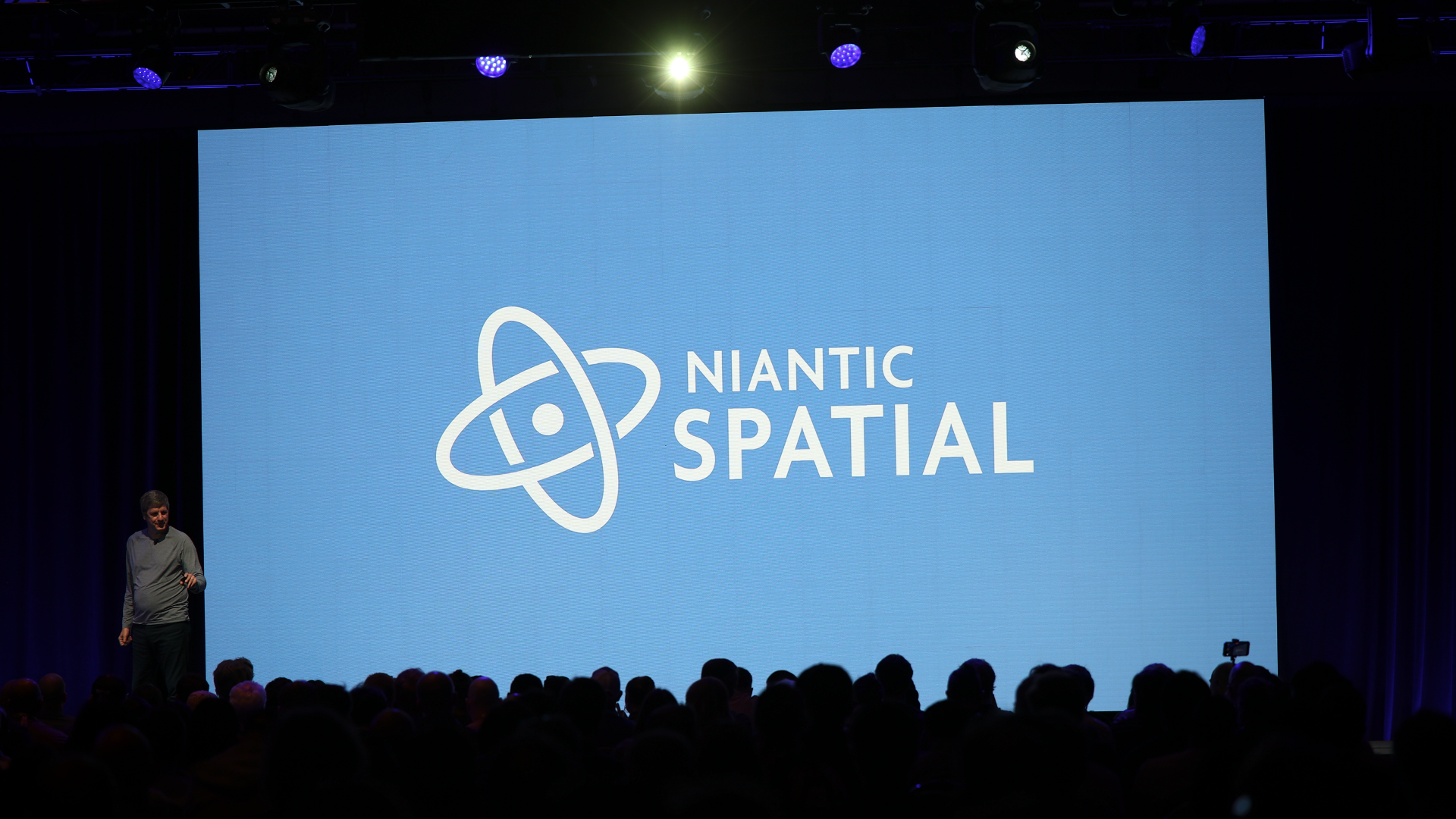Welcome to AWE Talks, our new series that plucks the greatest hits from the vast AWE conference archive. To get the juices flowing for AWE USA 2021, we'll spend the next several weeks highlighting insightful videos from the recent past. The archive is well-stocked with evergreen insights for your ongoing spatial smarts. We'll do the heavy lifting in selecting top sessions and summarizing takeaways.
We'll kick things off this week with a look at 8th Wall's deep dive into Web AR creation and authoring. Though we love talks that examine XR's broader trends and world-changing potential, hands-on sessions offer concrete and tactical takeaways for today. 8th Wall's Tony Tomarchio and Rigel Benton do just that by diving into the code for hands-on demonstrations of AR experience creation.
Highlighting this session also commemorates this week's launch of 8th Wall Release 17. Featuring portal functionality and other updates, it represents the latest in Web AR functionality. But before that point, 8th Wall had a strong foundation of web AR functionality that Tomarchio and Benton walk through. That includes its cloud editor, world tracking, and image targets among other things.
See the full video below along with TLDR (or TLDW) quick-hit takeaways.
-- Web AR's positioning in the ubiquitous mobile browser brings scalability benefits in that it's not fragmented by platforms, and works on 3.5 billion devices globally.
-- Beyond quantitative benefits, Web AR's qualitative benefits continue to improve as it catches up to native apps in AR interactivity and functionality (thanks largely to the work of 8th Wall).
-- Web AR is also advantaged by dynamic updates. Compared to the approval and update process of native apps, web AR changes can be made and pushed out dynamically, especially using 8th Wall's Cloud Editor.
-- Because Web AR happens on the web, it can also take advantage of web standards such as campaign metrics in Google Analytics.
-- All of these opportunities for web AR creation are within reach of any web developer, in that it's built on common standards like Javascript, HTML and CSS.
-- Web AR will continue to evolve and correspondingly will require constant education for developers building things, brands marketing themselves, and users.
-- Users will be the wild card as the above Web AR scalability figures fill in with active users that encounter dynamic activation opportunities in the real world.
See the full video below for all of the above concepts and more in living color.
 Want more XR insights and multimedia? ARtillery Intelligence offers an indexed and searchable library of XR intelligence known as ARtillery Pro. See more here.
Want more XR insights and multimedia? ARtillery Intelligence offers an indexed and searchable library of XR intelligence known as ARtillery Pro. See more here.
We'll kick things off this week with a look at 8th Wall's deep dive into Web AR creation and authoring. Though we love talks that examine XR's broader trends and world-changing potential, hands-on sessions offer concrete and tactical takeaways for today. 8th Wall's Tony Tomarchio and Rigel Benton do just that by diving into the code for hands-on demonstrations of AR experience creation.
Highlighting this session also commemorates this week's launch of 8th Wall Release 17. Featuring portal functionality and other updates, it represents the latest in Web AR functionality. But before that point, 8th Wall had a strong foundation of web AR functionality that Tomarchio and Benton walk through. That includes its cloud editor, world tracking, and image targets among other things.
See the full video below along with TLDR (or TLDW) quick-hit takeaways.
-- Web AR's positioning in the ubiquitous mobile browser brings scalability benefits in that it's not fragmented by platforms, and works on 3.5 billion devices globally.
-- Beyond quantitative benefits, Web AR's qualitative benefits continue to improve as it catches up to native apps in AR interactivity and functionality (thanks largely to the work of 8th Wall).
-- Web AR is also advantaged by dynamic updates. Compared to the approval and update process of native apps, web AR changes can be made and pushed out dynamically, especially using 8th Wall's Cloud Editor.
-- Because Web AR happens on the web, it can also take advantage of web standards such as campaign metrics in Google Analytics.
-- All of these opportunities for web AR creation are within reach of any web developer, in that it's built on common standards like Javascript, HTML and CSS.
-- Web AR will continue to evolve and correspondingly will require constant education for developers building things, brands marketing themselves, and users.
-- Users will be the wild card as the above Web AR scalability figures fill in with active users that encounter dynamic activation opportunities in the real world.
See the full video below for all of the above concepts and more in living color.
 Want more XR insights and multimedia? ARtillery Intelligence offers an indexed and searchable library of XR intelligence known as ARtillery Pro. See more here.
Want more XR insights and multimedia? ARtillery Intelligence offers an indexed and searchable library of XR intelligence known as ARtillery Pro. See more here. 


